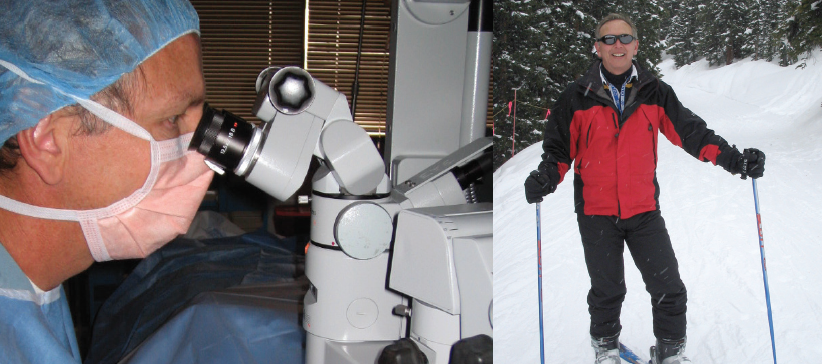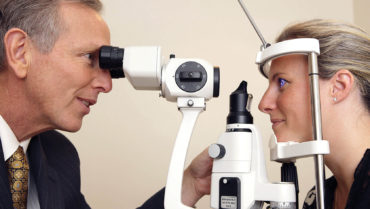A year into his role as Chief Medical Officer for Carl Zeiss Meditec, Steven Schallhorn, MD, says working for industry offers a very different perspective from working with industry. But if you stand back far enough, he assures us, the big picture goal is the same: better eye care.
There are distinct differences between working directly for a company and being a consultant to a company, but there are also similarities, as I have learned from my work with Carl Zeiss Meditec. I am the Chief Medical Officer (CMO) for Global Ophthalmic Devices for Carl Zeiss Meditec, and I was previously a consultant to the company.

Dr. Schallhorn giving an address on the USS Stennis (left); hiking (right).
Companies may not—and often should not—share their innermost workings with a consultant. However, as CMO, I have inside access to everything, and I am in a position to provide clinical leadership and strategic guidance on the most fundamental issues of the business, such as where the company is heading and how best to get there. The CMO is the primary medical voice of the company, both internally and externally.
As CMO for Zeiss, I have been able to see some things that I never fully appreciated as a consultant: these include the tremendous amount of work that goes on in the background, the scope and depth of research that may never see the light of day, and the high level of due diligence in product development. The biggest difference in my CMO capacity is that I am inside the workings of the company rather than adjacent to them, so it is a matter of perspective.
…
The experience of working for industry is closely related to that of being a practicing eye care provider, which I still actively participate in. In either case, the main focus is on the patient, whether directly as an eye care provider or indirectly as a member of industry. Our aim at Zeiss is to help eye care providers deliver the best possible care for their patients. Examples of this include providing the best surgical viewing equipment and tools for a cataract procedure, state-of-the-art lasers for treatment, intelligent diagnostics, and efficient data management.

Dr. Schallhorn behind the microscope (left); skiing (right).
One of the things that drew me to Zeiss is that the company is owned by a foundation. The Carl Zeiss Foundation was built around the principles of the company’s founders, Carl Zeiss and Ernst Abbe. Those principles include performing cutting-edge research, executing with exceptional precision, producing the highest-quality products, and maintaining our responsibility to society. For more than 125 years, the foundation’s goals have been to promote science, innovative technology, and education in a socially responsible manner.

Dr. Schallhorn.
Many people may think industry is driven entirely by the bottom line, but the truth is that Zeiss is driven to contribute to medicine by providing the best products and services to help eye care providers improve outcomes and quality of life for their patients.




